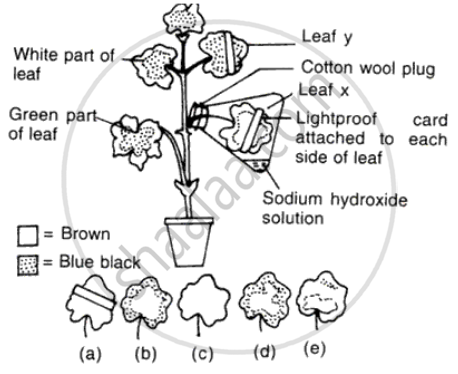Advertisements
Advertisements
Question
Define the three processes by which plants absorb water and minerals from the soil.
Solution
Plants absorb water and minerals from the soil through three primary processes: osmosis, diffusion, and active transport.
- Diffusion: The movement of molecules (gas, liquid, or solid) from a higher concentration to a lower concentration is called diffusion.
Soil water moves into the root hairs through the process of diffusion from higher concentration to lower concentration as we put sugar in the milk, and the sugar molecules are evenly distributed in the milk and occupy intermolecular spaces. - Osmosis: The movement of water molecules across a semipermeable membrane from an area of higher water potential (lower solute concentration) in the soil to an area of lower water potential (higher solute concentration) inside the root cells.
The cell sap and the cell walls act as semi-permeable membranes and permeable membranes. The concentration of the cell sap is more as compared to the water + minerals present in the soil. So the water and dissolved minerals enters the roots by the process of osmosis. - Active transport: The movement of molecules from their lower concentration to a higher concentration by using energy is called active transport.
Root hairs absorb water and minerals from the soil. Water diffuses into the root hairs as the water concentration is higher than that of the root hair. However, in the case of minerals, these move from lower concentrations to molecules of higher concentration.
The minerals from the soil, along with water, move into the roots. This is active transport in the opposite direction, which needs energy.
APPEARS IN
RELATED QUESTIONS
What causes the opening and closing of guard cells of stomata during transpiration?
Briefly explain, how transpiration helps in upward conduction of water in plants?
The set up shown alongside was kept in sunlight for an hour. It was observed that drops of water appeared on the inside of the polyethylene bag.

- Name the process which is being demonstrated.
- Why was the pot and its soil left uncovered by the polythene bag?
- Why was the pot left in the sunlight?
- Suppose the pot in this experiment was placed inside a dark room instead of placing it in sunlight for some time. What difference will be noticed?
A well watered healthy potted plant with variegated leaves was kept in darkness for about 24 hours. It was then set up as shown in the diagram and exposed to light for about 12 hours. At the end of this time, leaf x and y were tested for starch. Study the diagram and answer the questions that follow:
(i) Why was the plant initially kept in darkness for 24 hours?
(ii) What is the function of sodium hydroxide solution in the flask?
(iii) Select the correct leaf from the five available choices shown in the diagram as a, b, c, d and e. Rewrite the correct answer by filling in the appropriate letter for the questions that follow:
1. After the starch test, leaf x would look like ______.
2. After the starch test, leaf y would look like ______.
(iv) The experiment with leaf y shows that photosynthesis requires the presence of certain factors. Mention any one factor.

Choose the correct answer:
The percentage of cuticular transpiration in plants is _____________
Describe an experiment to prove that transpiration occurs more from the undersurface of dorsiventral leaves.
Plants lose water by the process of transpiration.
Guard cells are responsible for the opening and closing of stomata.
Why is transpiration called a necessary evil?
(a) State whether the following statement are True or False.
(b) Rewrite the false statement in the correct form by changing either the first or the last word only.
Transpiration helps to cool the body of the plant.
